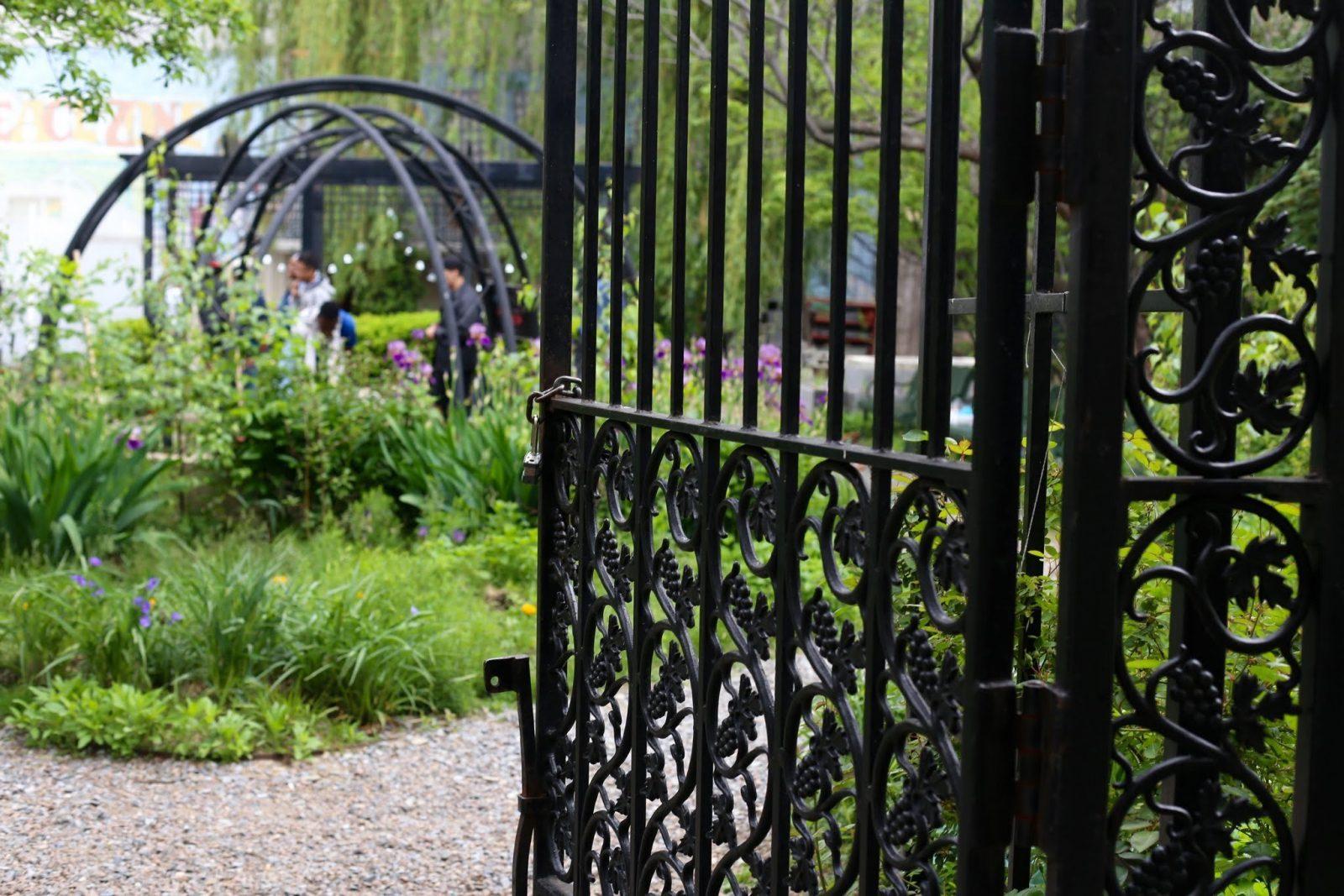
c/o The Urban Assembly School for Green Careers
In order to better prepare its students for jobs in urban agriculture and sustainable building, the Urban Assembly School for Green Careers is renovating its garden space, at the northeast corner of 84th and Amsterdam Ave. We spoke with the principal, Madeleine Ciliotta-Young, to learn more about this innovative institution, which operates out of Brandeis High School, and its plans.
The Upper West Side high school is part of the Urban Assembly network, which comprises 23 public CTE (Careers and Technical Education, formerly known as vocational) schools. UA, which is celebrating its 25th anniversary this year, is a pioneer in equity work around instruction and assessment as well as practices aimed at overcoming systemic racism in education. At the UA for Green Careers, students follow one of two tracks—urban agriculture or sustainable building.
The school employs an innovative pedagogy that has led to impressive results—90% of students graduate, compared with an average of 50% for the city.
Ciliotta-Young says the new garden, which is being designed by the students—with the Horticulture Society of New York providing consulting services—will include raised beds, beehives, a temporary greenhouse (the school is seeking funding for a permanent greenhouse), a garden shed, a rainwater collection system and a composting system. She did not disclose the cost of the project. The space, which the principal estimates to be 2,500 square feet, is essentially one of the classrooms.
READ MORE: Secret Gardens of the Upper West Side
The participants in the sustainable building program will design an “outdoor classroom” with wi-fi, where students can “read, write, research and reflect,” as well as attend workshops. (They also have indoor classrooms, of course, as well as an indoor hydroponic system.)
The UA School for Green Careers does not have entrance criteria, so kids with any type of background are accepted: Many of the 260 (about 300 before the pandemic) students enter below grade level. Eighty-five percent qualify for free or reduced lunch. About 25% are in IEPs (Individualized Education Programs) and receive special education services. Eleven percent of the student body are English language learners.
Advertisement
Grading is “mastery-based,” where the emphasis is on feedback. Assessment is based on skills, not attendance or participation, and pupils are grouped together based on ability level.
The conventional system of grading, says Ciliotta-Young, has “racist roots and disproportionately affects students living in poverty.” For example, many Black and Brown pupils, who often live in polluted areas, have asthma, which can affect their attendance. Or if an elevator in public housing breaks down and the student lives on the 24th floor, they might miss more days of school. Those with little access to food are more likely to fall asleep in class. “Poverty, stress and trauma can have many manifestations,” she says.
UA’s approach has led to enormous success for students, who leave with a certification and have to meet state-determined career and technical standards. It outpaces NYC in all graduation measures, says Ciliotta-Young. All of them end up enrolling in advanced placement courses. Ninety-four percent graduate high school on time. Over 80% of graduates enroll in college: Those have included Hunter, Cornell, Skidmore and NYU. (The majority are first-generation college students.)
For news across the park visit EastSideFeed.com
Many of those who don’t pursue post-secondary education get a job. Those in the building program might go into architecture, engineering or construction—with their training focused on issues caused by climate change. Those in the urban agriculture program might pursue careers in plant science, horticulture or “seed-to-table hospitality” including the culinary field. Some may enter into a trade program that aligns with the green-careers theme; some have pursued unrelated paths, such as art school; some might join the military; and five graduates now work at the school.
Ciliotta-Young says she’s looking forward to inviting the community to see the new garden when it opens, which will be “as soon as possible.” She adds, “We’ll be inviting the neighborhood and politicians, including Gale Brewer and Helen Rosenthal and others who are really supportive of the program.”


